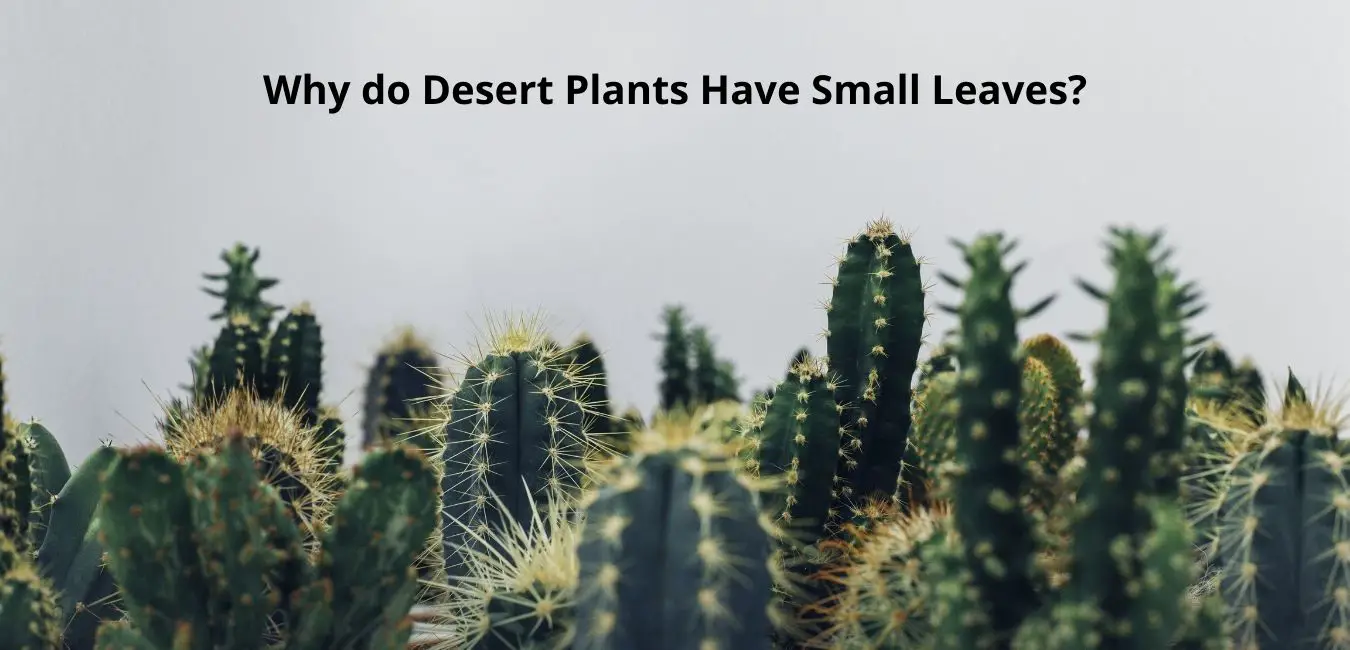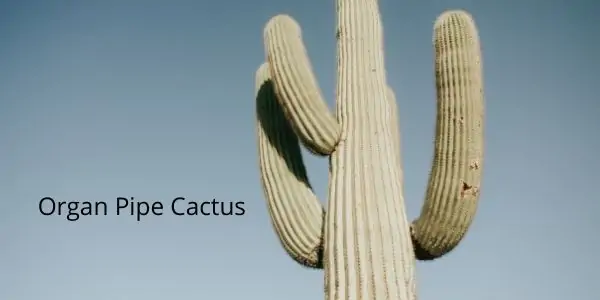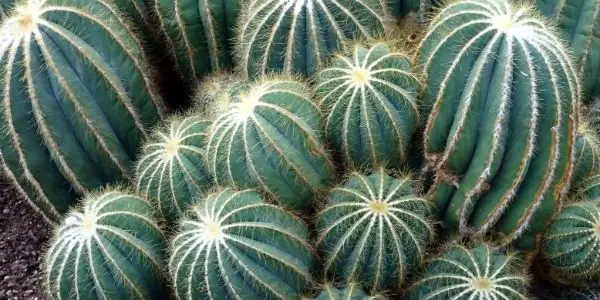Why do Desert Plants Have Small Leaves?- Most desert plants have very small, little, or no leaves at all. have you ever wondered why it is? The answer is- It is mostly due to natural adaptation. The Desert plants have to survive harsh wind and dry weather.
Desert plants have small leaves to reduce the open exposed leaf area for Transpiration. It helps in preventing excessive water loss due to transpiration and evaporation.
Do you ever notice there is no leaf in any of your cactus? Instead of leaves, the cactus plant has thorns. A Thorn is a highly modified leaf that helps in the prevention of water loss. Thin spiny thorns reduce the surface area in contact with wind and sunlight. This modification significantly reduces the rate of transpiration in every cactus.

Check out my previous post: 10 Plants That Repel Spiders- Garden Facts
Why are the leaves of Desert plants small?
The Desert is not a very comfortable environment for any plant. The harsh dry climatic condition forces a plant to its limits for survival.
Nature has handled this problem efficiently by adapting plants according to their surrounding environment. Therefore, you will see very little, small, or mostly no leaves in desert plants.
These plants have adapted to their native climate. They have either lose their leaves completely or modified them in some form.
That’s why you will find Thorns, spines, or small thick leaves in specific desert plants. All of these are variations or simply modifications in leaves. These modified leaves have specific functions for the plant.
Desert plants have small leaves to reduce transpiration. This is the main objective of any natural modification in desert plants.
Why do Cacti have small leaves?
First of all, it is a fact that Cactii has no leaves. Instead, every cactus plant has some spiny thorns. Although these thorns are actually modified leaves.
Cacti have small modified leaves called thorns. These modified leaves reduced the surface are in contact with the wind or sunlight. They also contain very few smaller stomata to transpire or exchange gases.
The reduction in the size of leaves and stomata helps the cacti to save extra water. That might be lost otherwise with broad flat exposed leaves.
Water is the most precious asset in the desert. Every plant needs it and must save it for survival. Sometimes they can receive bare minimum or no rainfall in several years.
This harsh condition forces the desert plants like cacti to procure some modifications. Adaptation is an essential aspect of survival. In order to save water and save its life, most cacti develop thorns instead of leaves.
Read more about 8 Common Edible Cactus Varieties Worldwide
Reason for Small leaves in Desert Plants?
You may have noticed flat, broad, thin, and green leaves in your garden plants. I think all of you know what a leaf does for the plant? You can easily answer respiration, photosynthesis, and transpiration. Yeah great, you know that!
But have you ever wonder can these bio-mechanisms harm a plant? Yes, it can. Indeed over inspiration can easily harm your plant. You may have seen this in container plants exposed to direct sunlight for several days. Transpiration is a natural process it helps in the exchange of gases including water vapor.
This can cause ham if the plant faces a scarcity. Although you can handle this scarcity by regular watering in your garden. But this is not possible in the desert.
Sometimes desert plants get only 1-5 mm of downpour every year. This is the least a plant can survive. Therefore these plants modify their structure and body parts to adapt to the surrounding environment.
They develop thick small leaves with very few stomata opening. This is required to reduce the rate of transpiration even in the hot noontime.
The main reason for small leaves in desert plants is to reduce water loss due to transpiration. It is an effective natural survival mechanism for desert plants.
Are small leaves beneficial for desert plants?
Indeed small or thorny leaves are beneficial for desert plants. These leaves have very few stomata and even their size is smaller than other plants.
These stomata are also covered with an extra protection layer to reduced evaporation. They are specially modified to reduce water loss as much as possible. Generally, the stomata in desert plants open during cold daytime like early morning, evening, or night.
All of these features help a desert plant to save its precious water. This adaptation is so effective that a mature desert cactus can survive fr several years without rainfall.
You should read 15 Easy to Grow House Cactus Plants
What are the benefits of Small leaves for desert plants?
There are many benefits of small leaves for desert plants. The most important is reduced water loss due to excessive transpiration.
Less exposed are in contact leads to a low evaporation rate. This helps the plants by saving precious body water. Although most desert plants have adapted accordingly to save water in their trunks. They have modified their entire vascular structure in order to save as much water as they can.
Protection from predators is another crucial benefit. Modified leaves specially Spines and Thorns keep gazing animals away for desert plants. This is a natural defense mechanism against herbivores. Although many desert animals like camels have adapted to this defense mechanism. They can easily chew the spines and thorns as you do with celery.
Another unique advantage of small thorny leaves is the natural aerodynamics. Yes, it is true, Desert plants have to reduce their body temperature in the same way. They have very few leaves and stomata for transpiration. Losing water is not an option for thermal regulation.
They have to save water so they can’t always transpire. Instead, they develop a marvelous aerodynamic body design. That helps in natural cooling as well as reducing air fiction. The sharp edging and aerodynamic body of desert plants help them stand firm in strong desert winds.
Collectively the adaptation of desert plants has helped them to survive the harsh hot moisture less surrounding.



